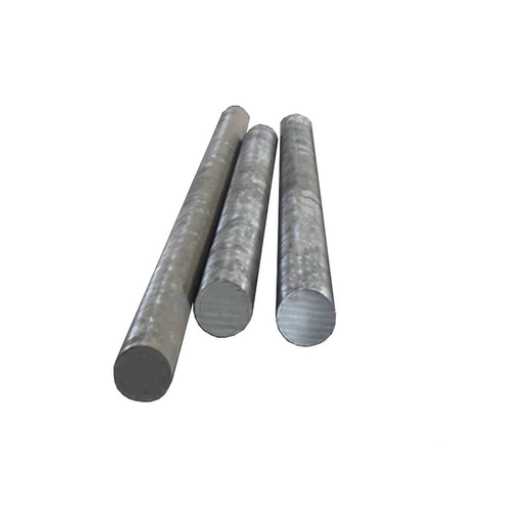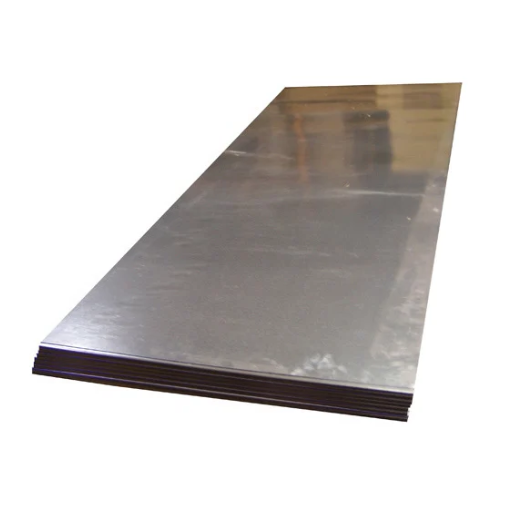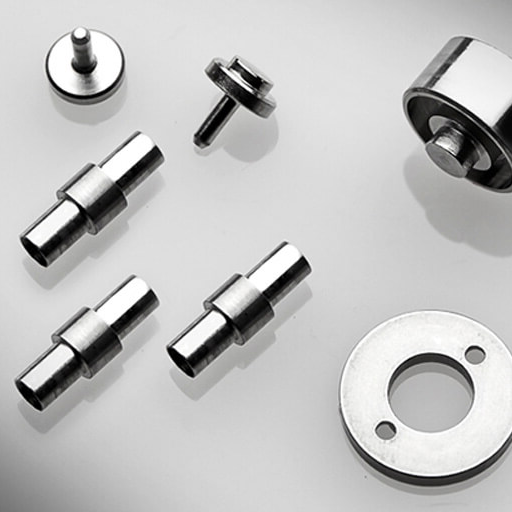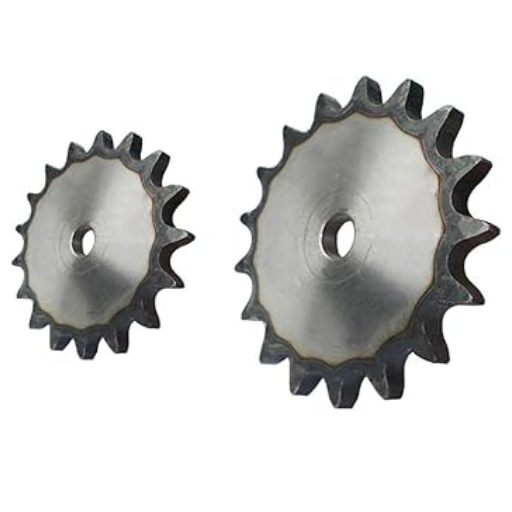A3 does not disappoint when it comes to being a versatile and trustworthy option under tool steel. This type of steel is valid for a wide range of professionals, from a simple curious engineer to a high-power-performance manufacturer or even a high-grade machinist. Understanding A3 tool steel, along with its properties and applications, is crucial, and this article aims to do that by discussing the unique make characteristics of tool steel A3, which is known for impressive wear resistance, toughness, and quite good machinability. Besides that, we will try to uncover which industries and projects stand to gain the most, along with this material’s astounding versatility. Ultimately, we wish to provide you with the know-how on why this tool steel is highly crucial to modern machines and manufacturing.
What is Tool Steel?

Tool steel is a subtype of carbon and alloy steel explicitly shaped for use in tools and dies. What sets it apart is its hardness, superb durability, and incredible resistance to wear and damage while cutting, shaping, and using those materials. The versatility of this steel is astounding when used in construction, manufacturing, and engineering, especially when beauty in precision and strength is desired.
Definition and Overview of Steel
Steel consists primarily of iron and carbon, with varying amounts of manganese, chromium, and nickel to optimize its properties. Because of its strength and versatility, it is considered one of the most widely used materials in the world, from the construction and automotive industries to aerospace and energy production.
Modern steel is classified into four types based on its composition and application: carbon steel, stainless steel, alloy steel, and tool steel. The global production of crude steel in 2022 was reported to be approximately 1.88 billion tons, indicating steel’s significance in the economy. Different manufacturing processes, like heat treatment and alloying, can alter the materials’ ductility, tensile strength, and corrosion resistance.
One of the most astounding achievements is the advancement of incorporating energy-efficient methods into steel production. In the United States alone, over 600 million tons of steel are recycled annually. By focusing on sustainability, these methods position steel as a crucial component in developing modern infrastructure while aiding in achieving environmental objectives in the industrial sector.
Chemical Composition of Tool Steel
| Element | Purpose ofOne Tool Steel | Typical Range (%) |
|---|---|---|
| Carbon (C) | Hardness and wear resistance | 0.4 – 1.5 |
| Chromium (Cr) | Corrosion resistance and hardness | 0.5 – 13.0 |
| Vanadium (V) | Grain refinement and wear resistance | 0.1 – 4.5 |
| Molybdenum (Mo) | High-temperature strength | 0.2 – 10.0 |
| Tungsten (W) | Heat resistance and hardness | 0.5 – 19.0 |
| Manganese (Mn) | Toughness and hardenability | 0.2 – 2.5 |
| Silicon (Si) | Strength and tempering resistance | 0.1 – 2.5 |
| Cobalt (Co) | Red hardness and wear resistance | 0.5 – 10.0 |
| Nickel (Ni) | Toughness and corrosion resistance | 0.1 – 2.0 |
| Phosphorus (P) | Impurity, kept minimal | ≤ 0.03 |
| Sulfur (S) | Impurity affects machinability | ≤ 0.03 |
Comparison of A3 Tool Steel with A2 Tool Steel
| Parameter | A3 Tool Steel | A2 Tool Steel |
|---|---|---|
| Carbon Content (%) | 1.00 – 1.25 | 1.0 – 1.1 |
| Chromium Content (%) | 0.20 – 0.50 | 4.8 – 5.5 |
| Vanadium Content (%) | 0.15 – 0.50 | 0.15 – 0.5 |
| Manganese Content (%) | 0.20 – 0.70 | 0.4 – 0.6 |
| Hardness (HRC) | 57 – 62 | 63 |
| Wear Resistance | Moderate | High |
| Toughness | High | Moderate |
| Machinability | Good | Moderate |
| Corrosion Resistance | Poor | Moderate |
| Applications | Punches, dies, and industrial knives | Cutting tools, punches, dies |
| Heat Treatment | Air-hardened | Air-hardened |
What are the Properties of A3 Steel?

Like other steel types, A3 has unique features. A3 steel is classified as a cold-worked tool steel and is well known for its exceptional toughness and machinability. Because of the need for strength and durability, it is best used in contexts with recurrent impact or wear. Its most significant properties are moderate hardness, stability during heat treatment, and a lesser amount of carbon than similar steel types. This permits an improvement in A3’s steel toughness.
Hardness and Toughness
A3 steel is best known for applications requiring moderate hardness, impact durability, and wear resistance. Its ability to withstand excessive impact further enhances its toughness.
Tensile and Yield Strength
In my understanding, A3 steel is best known for its balance between yielding and tensile strength, which makes it perform well under demanding requirements. With A3 steel, an individual can expect it to have significant tensile strength while yielding strength strong enough to endure excessive forces without permanent deformation.
Impact of Heat Treatment on A3 Steel
| Heat Treatment Process | Effect on A3 Steel | Key Parameters |
|---|---|---|
| Annealing | Reduces hardness, improves machinability | 850-870°C, slow cooling |
| Hardening | Increases hardness and wear resistance | 950-980°C, air or oil quenching |
| Tempering | Balances hardness and toughness | 150-400°C, 1 hour per 25mm |
| Normalizing | Refines grain structure, enhances toughness | 830-860°C, air cooling |
| Cryogenic Treatment | Reduces retained austenite, improves wear resistance | Sub-zero temperatures (-80°C to -196°C) |
How is it used in Applications?

Due to its varying degrees of strength, durability, and wear resistance, A3 steel is used widely, especially in manufacturing structural components, tools, and machine parts. Because of its durable nature, it’s a great choice for the construction and automotive industry, further enhancing its popularity.
Applications in CNC Machining
With known strength properties, A3 steel’s durability makes it perfect for CNC machining. This medium-carbon steel can maintain dimensional stability and withstand the creation of high-precision parts such as fasteners, gears, and shafts.
The typical hardness of A3 steel allows for easy cutting and shaping at the machining (160–200 HB Brinell Hardness) level. It also withstands the cutting forces during machining. Due to heat treatment, A3 steel has higher potential tensile strength, which makes its scope wider in aerospace, automotive, and industrial manufacturing.
Today, CNC technologies can greatly improve the precise machining of A3 steel. High-speed CNC mills with carbide-tipped cutting tools can now reach tolerances of ±0.01 mm, catering to intricate designs. Data also suggests that productivity parameters like moderate cutting speed of 20–40 m/min and feed rate of approximately 0.15 mm/rev for turning operations significantly reduce tool wear without sacrificing productivity.
Economically viable mass and prototyping production make CNC machining of A3 steel flexible and efficient. The steel’s combination of material properties makes A3 indispensable to a diverse range of high-performance and military-grade precision systems.
Suitability for Cold Work Tooling
Due to its outstanding characteristics, A3 steel is highly recommended for cold work tooling applications. Its unique blend of hardness, wear resistance, and toughness allows it to withstand the immense stresses imposed by cold working processes. Outlined below are the factors that define A3 steel’s suitability for cold-working tooling:
- High Wear Resistance
The A3 steel ensures wear-resistant properties, which support greater tool life even in harsher conditions like stamping and shearing specific to cold work.
- Good Dimensional Stability
During manufacturing and heat treatment, A3 steel possesses remarkable dimensional stability, which allows for further precision compatibility in advanced tooling systems.
- High Compressive Strength
The material supports tremendous compressive strength, permitting significant loads and pressures that are standard in cold work operations.
- Ease of Machinability
With A3 steel, durability is balanced with ease of machining, resulting in cost-effective, complex tool designs requiring significantly reduced expenditure.
- Resistance to Chipping
Toughness within A3 steel significantly reduces problems associated with chipping from repeated loading or high impacts, thus improving the dependability of the tools.
With these properties combined, A3 steel becomes a practical choice for manufacturing tough, reliable tools designed for cold working processes.
Advantages in Sheet Metal Processing
It is not highly uncommon for me to find the sheet metal processing industry, A3 steel, excel in functionalities due to its durability and wear resistance. The reliance on impact and repetitive strain for functioning performance and machinability for intricate components makes A3 steel the most reliable in efficient performance for cold working applications. A3 steel is also trustworthy in cold working applications, due to its efficiency and reliability.
What are the of A3 Tool Steel?

| Property | Details |
|---|---|
| Hardness (HRC) | 57-62 after heat treatment |
| Tensile Strength (MPa) | 700-2150, depending on heat treatment |
| Yield Strength (MPa) | 340 |
| Wear Resistance | High |
| Toughness | Excellent |
| Machinability | Good (65% of carbon tool steel) |
| Corrosion Resistance | Poor |
| Thermal Conductivity | 37 W/(m·°C) |
| Elastic Modulus | 190-210 GPa |
| Applications | Punches, dies, cutting tools, molds |
Density and Elasticity
A3 tool steel has remarkable physical properties of high density and high elasticity, making it especially useful in technically challenging solutions. Following those is a list of its most essential characteristics:
- Density
The density of A3 tool steel is at approximately 7.85 g/cm³ which guarantees a solid shape and weight support capability.
- Elastic Modulus
The elastic modulus value for A3 tool steel is about 210 GPa, implying that the material is non-compressible and highly rigid.
- Poisson’s Ratio
When the material is under stress, the ratio of the diameter’s contraction to axial elongation is usually 0.27- 0.30.
- Thermal Expansion Coefficient
The thermal change extent is between 11.0 to13.0 μm/m°C which offers reliability upon changes in temperature.
- Yield Strength
The yield strength of A3 tool steel is 450-650 MPa, which proves the material has significant force resistance before assuming a fixed deformation.
This information explains how this A3 tool steel is useful in various industrial functions due to its high facing strength and resistance.
Thermal Conductivity and Expansion
The ability of A3 tool steel to withstand high-temperature environments and precise applications needing advanced-level intricacy differentiates its functionality from the rest.
Because it can quickly and easily transfer heat, A3 tool steel’s thermal conductivity makes it eligible for use in equipment such as molds and dies that undergo rapid heating and cooling cycles. The thermal conductivity of A3 tool steel also ranges from 25 to 30 W/m·K, which proves its eligibility for use in controlled environments.
The thermal expansion for A3 tool steel is approximately 11.0 to 13.0 μm/m°C with the linear thermal expansion coefficient. Controlled thermal expansion means that the material can withstand extreme thermal conditions while maintaining stability, significantly reducing distortion, ensuring high-demanding workplace precision, and protecting its integrity.
By combining A3 tool steel’s unmatched endurance with thermal expansion and contraction in these harsh conditions, it proves to be excellent for places where precision and heat resistance are vital.
How to A3 Tool Steel?

To properly handle A3 tool steel, take the following critical approaches:
- Cutting and Shaping: Shaping the steel should be done with specific cutting or machining tools for high-strength materials.
- Preheating: To prevent thermal shock, gently preheat the steel. The suggested temperature range for preheating is between 750°F and 1250°F (400°C to 675°C).
- Hardening: It is crucial to heat the steel consistently at its recommended hardening temperature, which for A3 tools is within 1750°F to 1850°F (950°C to 1010°C). Maintaining the temperature for some time is advised to ensure uniformity.
- Quenching: This step reduces the risk of cracks forming. After hardening, the steel should be quenched in oil or air.
- Tempering: This step entails reheating the steel to optimal conditions, which is the tempering temperature set out by the manufacturer’s guidance. The desired metallic features are hardness and toughness. For A3 tools, this is typically within 300°F and 600°F (150°C to 315°C). Following tempering, slow cooling needs to be permitted.
Maintaining the safety protocols issued by the manufacturer and taking precautions throughout to avoid harm is crucial.
Annealing Process for A3 Tool Steel
| Step | Details |
|---|---|
| Heating Temperature | 850-870°C |
| Cooling Method | Slow cooling in the furnace |
| Purpose | Reduce hardness, improve machinability |
| Final Hardness | Maximum 250 HB |
| Stress Relief | Relieves internal stresses |
Benefits of Annealing on A3 Steel
| Benefit | Details |
|---|---|
| Hardness Reduction | Reduces hardness, improves machinability |
| Stress Relief | Relieves internal stresses |
| Improved Ductility | Allows significant deformation without cracking |
| Enhanced Machinability | Easier to machine and form |
| Dimensional Stability | Reduces the risk of warping or cracking |
Steps for Achieving an Annealed State
Achieving an annealed state in A3 tool steel demands precise control of temperature and the cooling processes. Here is how to do it step by step:
- Preheating A3 Tool Steel
Incrementally heat the A3 tool steel between 750-800°C (1382-1472°F). This step mitigates thermal shocks and ensures uniform heating across the material.
- Holding at Full Annealing Temperature
Once preheating is complete, raise the temperature further to about 850-900°C (1562-1652°F) and maintain this level. During this step, the temperature should be kept for 1 hour per 25 mm (or 1 inch) of thickness so that the microstructure has ample time to “transform.”
- Soaking
After that period of soaking, the tool steel should be cooled down in a furnace at no more than 20°C (or 68°F) per hour to close to 600 °C (or1112°F), during which time it should not be removed from the furnace. Doing so prevents hard spots and guarantees uniformity across the material.
- Air Cooling
Soaking should be followed by removing the tool steel and air cooling down to room temperature(will stay at 600°C during this process). Residual stress buildup will be minimized with this method –
- Confirm Hardness and Microstructure
After cooling, the steel should be checked for hardness to ensure that the desired annealed microstructure has been achieved. The typical hardness for annealed A3 tool steel is approximately HB 160-200, so machining can be accomplished.
These steps effectively obtain the annealed state, allowing precise and dependable further material processing.
Is A3 Steel Suitable for Applications?

| Parameter | Details |
|---|---|
| Strength | High, suitable for load-bearing components |
| Toughness | Excellent, resists impact and stress |
| Wear Resistance | High, ideal for tools and dies |
| Machinability | Good, easy to machine with proper tools |
| Corrosion Resistance | Poor, requires protective coatings |
| Heat Resistance | Moderate, up to 400°C continuous |
| Applications | Punches, dies, gears, and structural parts |
| Cost-Effectiveness | Affordable compared to higher alloy steels |
Welding Techniques for A3 Tool Steel
| Step | Details |
|---|---|
| Preheating | 250-538°C to reduce cracking risks |
| Welding Method | Shielded arc or TIG welding is recommended |
| Filler Material | Use uncoated tool steel or stainless rods |
| Post-Weld Heat | Temper at 50°F below the original tempering |
| Cooling | Slow cooling to minimize stress |
| Precautions | Avoid overheating, ensure stress relief |
Challenges and Solutions in Welding A3 Steel
| Challenge | Solution |
|---|---|
| High cracking risk | Preheat to 250-538°C |
| Stress from heat input | Use low heat input and light peening |
| Hardness variation | Post-weld tempering below the original temper |
| Poor weldability | Use shielded arc or TIG welding methods |
| Slag and impurities | Ensure cleanliness and remove slag |
| Crack propagation | Drill stop holes at the crack ends |
References
- Stub column study using welded, Cold-Reduced Steel – A study from Missouri University of Science and Technology discussing steel properties and standards.
- Supplement No. 1 to the Specification for Structural Steel Buildings – A document detailing structural steel specifications and standards.
- The plastic flow of iron and plain carbon steels above the A3-point – A research article from IOP Science focusing on the behavior of steels at high temperatures.
Frequently Asked Questions (FAQ)
Q: What are the mechanical properties of A3 tool steel?
A: The mechanical properties of A3 tool steel, also known as AISI A3, include high tensile strength and hardness. It is a high-carbon alloy tool steel that typically achieves a hardness of 28-34 HRC and is known for its excellent wear resistance and ability to maintain a sharp edge.
Q: What are the physical properties of A3 tool steel?
A: The physical properties of A3 tool steel include a density of approximately 7.85 g/cm³. It has a high carbon content, which contributes to its hardness and strength. The alloy also contains elements like manganese, chromium, and molybdenum, enhancing its durability and corrosion resistance.
Q: What applications is A3 tool steel used for?
A: A3 tool steel is used in various applications, including the manufacturing of cutting tools, dies, and punches. Its high-quality cold work capabilities make it suitable for applications that require high strength and wear resistance. It is also used to produce components that require toughness and stability under stress.
Q: How does A3 tool steel compare to other tool steels?
A: A3 tool steel, or UNS T30103, is a high-quality cold work tool steel with a balanced combination of hardness, toughness, and wear resistance, making it suitable for demanding applications. It is comparable to other high-carbon alloy tool steels but offers unique advantages like air hardening capabilities and good machinability.
Q: What is the typical carbon content of A3 tool steel?
A: A3 tool steel has a high carbon content, essential for its hardness and strength. The carbon content typically ranges from 0.90% to 1.20%, contributing to its excellent wear resistance and ability to maintain sharp cutting edges.
Q: How is A3 tool steel hardened and tempered?
A: A3 tool steel is hardened by heating it to 800-850°C (1472-1562°F) and then quenching it in oil or air, which is why it is referred to as air hardening. It is then tempered by reheating to 150-500°C (302-932°F) to achieve the desired balance between hardness and toughness.
Q: What are the equivalent grades of A3 tool steel?
A: Equivalent grades of A3 tool steel include ASTM A681 and FED QQ-T-570. These standards ensure the material meets specific requirements for high-quality carbon alloy tool steel used in industrial applications.
Q: What makes A3 tool steel a high-quality cold-worked tool?
A: A3 tool steel is considered a high-quality cold-worked tool steel due to its excellent machinability, high tensile strength, and resistance to wear and deformation. Its composition, including chromium and vanadium, enhances its performance in cold work applications.
Q: What is the machinability of A3 tool steel?
A: A3 tool steel’s machinability is considered good relative to other high-carbon alloy tool steels. Its balanced composition allows for efficient machining processes, making it a preferred choice for tool and die applications where precision and surface finish are critical.







